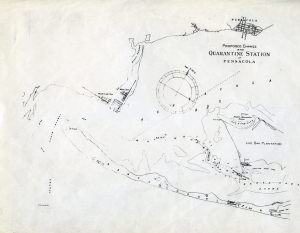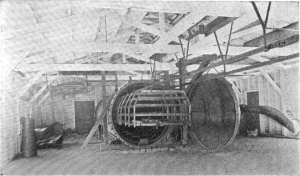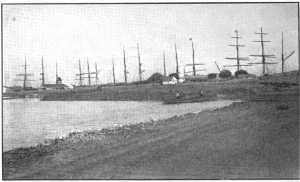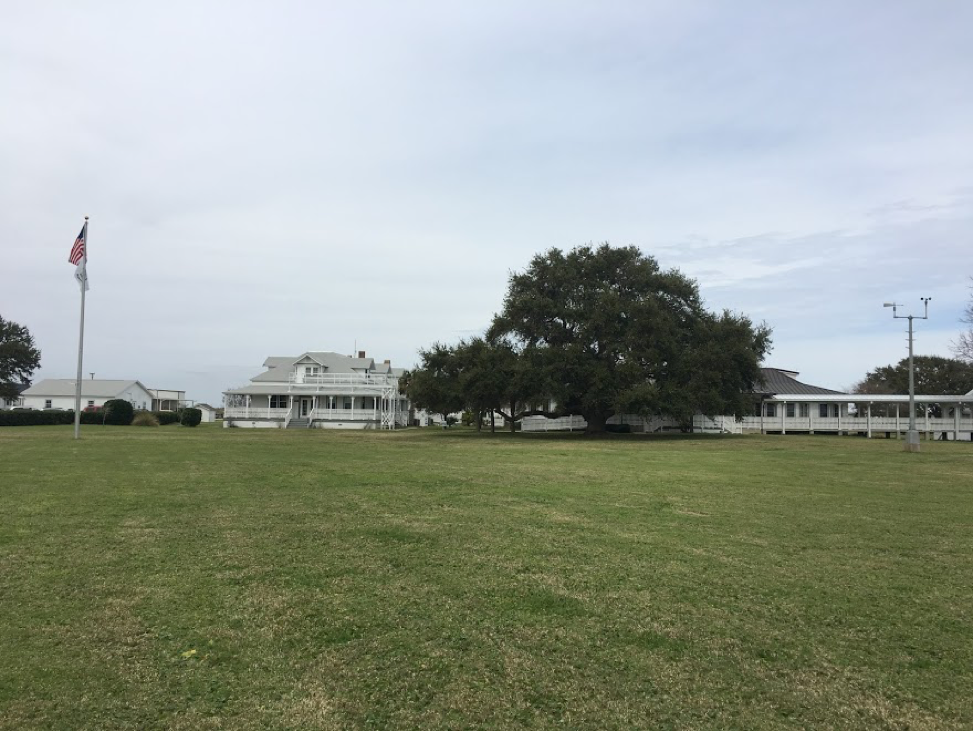
Remnants of the last installment of the Pensacola Quarantine Station, now the Environmental Protection Agency (EPA) Gulf Ecology Division, resides at 1 Sabine Island Drive on a small man-made island off Santa Rosa Island. The stations served as Pensacola’s first line of defense against maritime diseases, playing a vital role in the public health landscape. Ships sailing into port from around the world had to stop at the station to ensure the health of their crews. Overtime, the station installed stringent rules and cleaning methods they believed killed yellow fever germs. Though this is the only station with structural remains, the other locations had an essential role in shaping the Public Health Landscape.
The station moved locations several times. The first station appeared at Deer Point in what is now Gulf Breeze. The station operated at that location from 1821 to about 1870. In 1853, the quarantine station faced its first yellow fever epidemic after the schooner Elizabeth and the steamship Vixen came into port. After the epidemic, officials feared about the current station’s proximity to populated areas and moved it to Deadman’s Island in Navy Cove.

That station faced two epidemics in 1874 and 1875. In 1882, the Pensacola Quarantine Station moved again to Santa Rosa Island at Sabine Inlet. Here, the station created strict rules for ships that arrived. Officials sent ships from known infected ports to Ships’ Island off the coast of Biloxi, Mississippi. The station quarantined all vessels, even if from uninfected ports. Once quarantined, the crew dumped their ballast stone to clean the bottom of the ship with quick lime and sulfur bombs. All ballast that was thrown overboard formed a ballast crib, a small island made of the stone. Eventually, the stone formed an island stable enough to support physician housing and a boathouse, known as Sabine Island.

In 1906, a hurricane destroyed the station on Santa Rosa Island. Officials moved the station to Sabine Island in 1907 as the structures there had survived the event. It operated until 1925. The island stayed under the control of the federal government, which gave it new life as the Fish and Wildlife Commission facility. After the founding of the EPA in 1970, the island became a research facility. The agency heavily renovated the five quarantine buildings to suit their needs. The area is not open to the public, but interested visitors can make an appointment to visit the small ecology library on the property.
Recommended Readings
Peabody, George L. Supplement to Ziemseen’s Cyclopedia of the Practice of Medicine. New York: William Wood and Company, 1881.
The Report of the Board of Health of the State of Alabama for the year 1887. Montgomery, Alabama, 1887.
Featured Image:
Downing, Anna. “Environmental Protection Agency Research Facility.” February 17, 2017.
Author: Anna Downing
ORCID ID: 0000-0001-9134-4439

